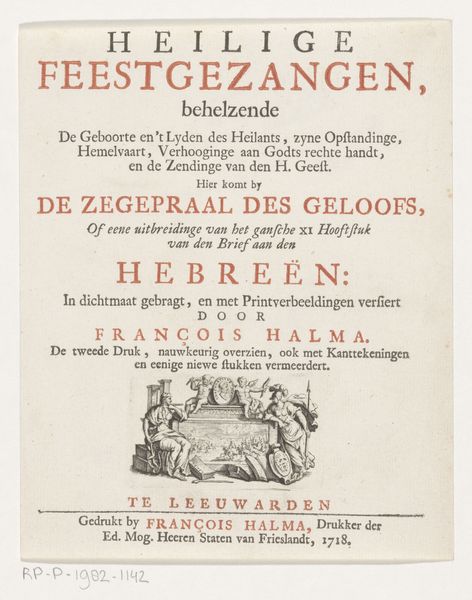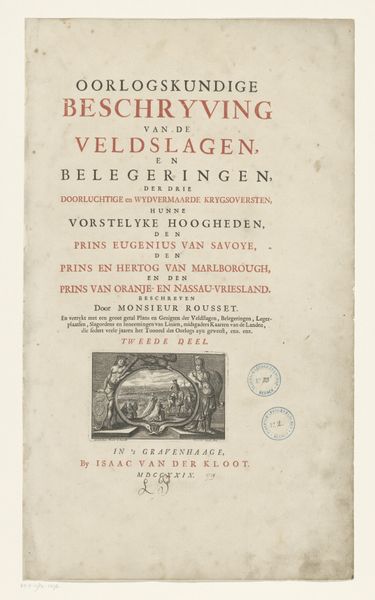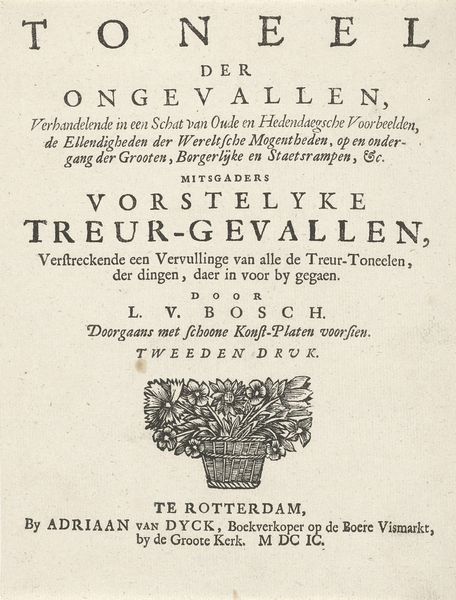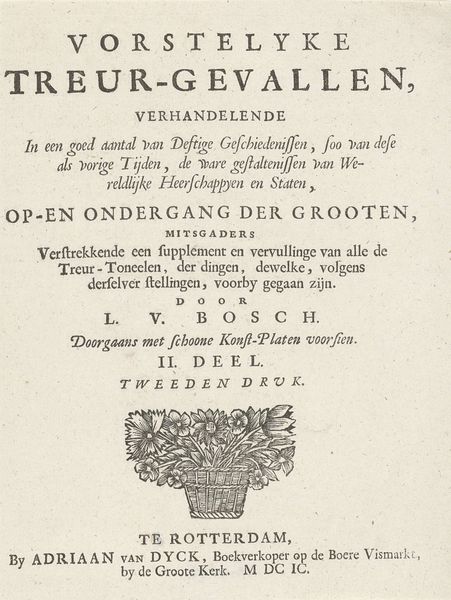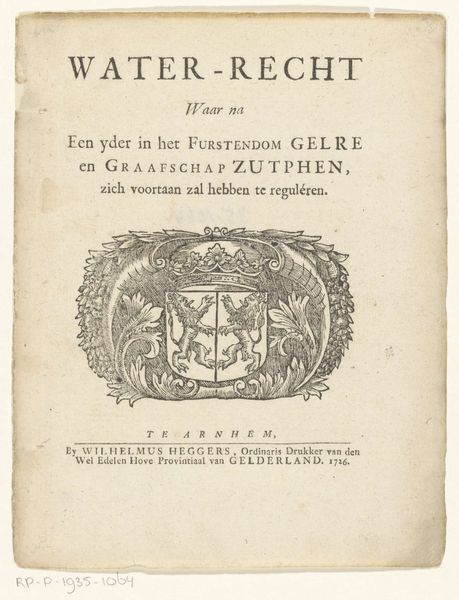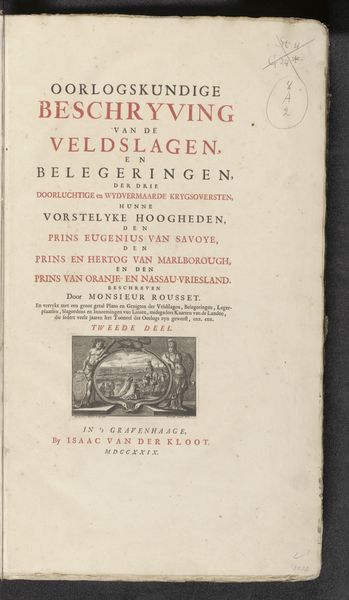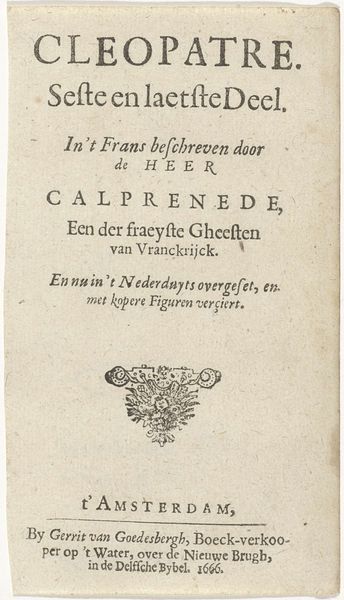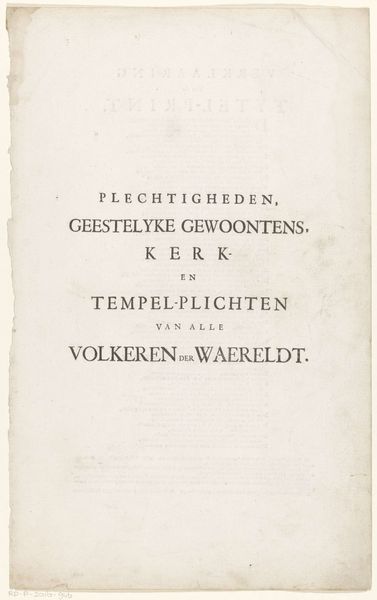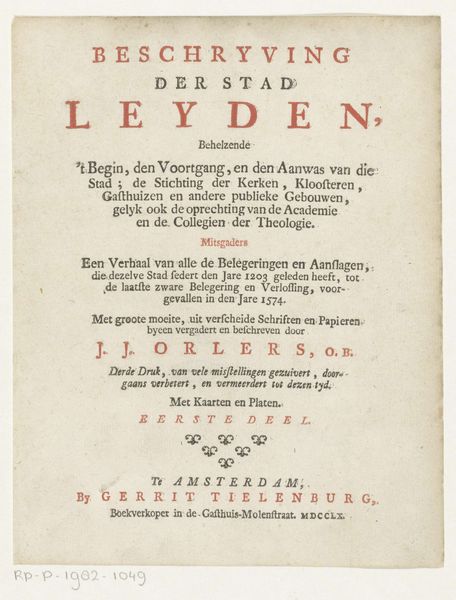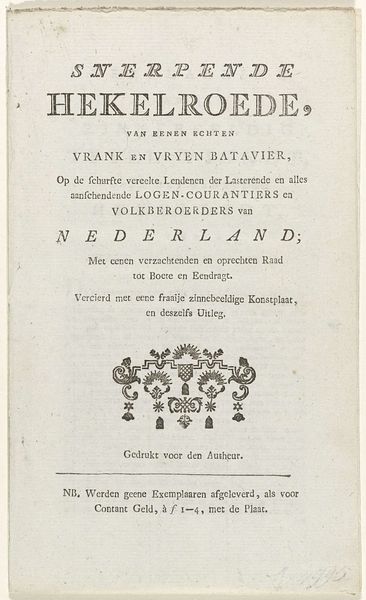
Dimensions: height 212 mm, width 141 mm
Copyright: Rijks Museum: Open Domain
Curator: We’re looking at “Ornament met plantmotieven,” a baroque print from 1761, currently held here at the Rijksmuseum. Editor: My initial reaction is restraint. There's a quiet elegance here, almost whispered. I’m drawn to the meticulous nature of the engraving. Curator: It’s anonymous, which invites a certain curiosity, doesn’t it? To me, it echoes the time when artisans were just as valued for craft as artists. This baroque typography is itself a feat of artistry. Editor: Absolutely, and I'm curious about the paper itself. It seems quite coarse. Consider the labor involved. Paper making then, typography—a dance of industrial process married to art. There’s such an immediate relationship between object and intention in this piece. Curator: It strikes me that the design seems to subtly invoke status—something made evident through this beautiful yet controlled chaos of embellishment surrounding the block lettering. Do you find that the symmetry has something to say? Editor: Yes. And while it's restrained, the very act of producing this ornament points to a society interested in display and ownership. I want to feel this. To feel the material in my hands. It speaks to the physical and material culture of the 18th century, doesn't it? Curator: You've brought to light that this could be so much more than "just" a baroque print. This small artwork encapsulates social identity of a people with so much material weight. Thank you for guiding me into considering the tactile and deeply rooted origins of such artistry. Editor: Thank *you*. It reminds us that what we deem 'art' has always been intertwined with the lives, labour, and the very materials of those who make it. The print truly bridges history, materials and hands into our present, doesn't it?
Comments
No comments
Be the first to comment and join the conversation on the ultimate creative platform.

